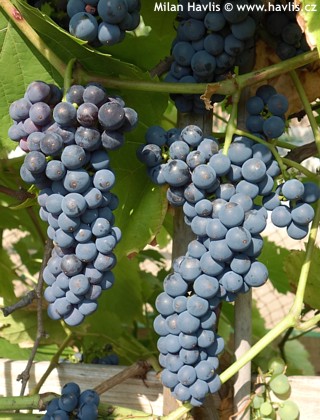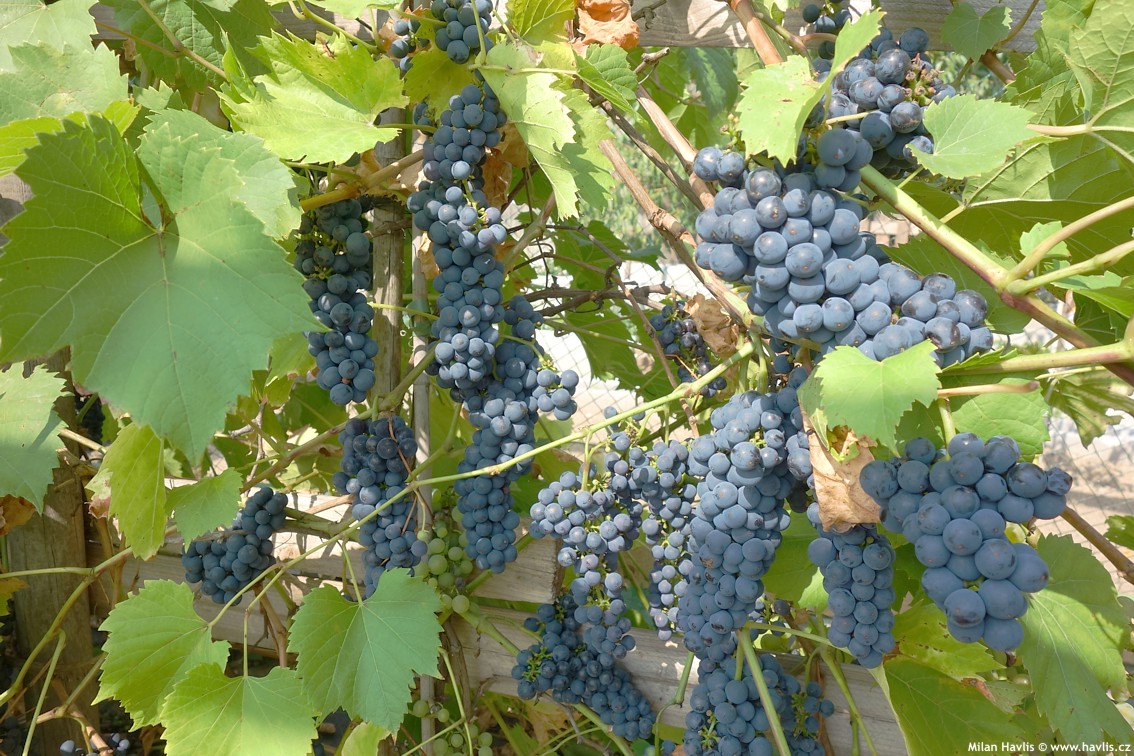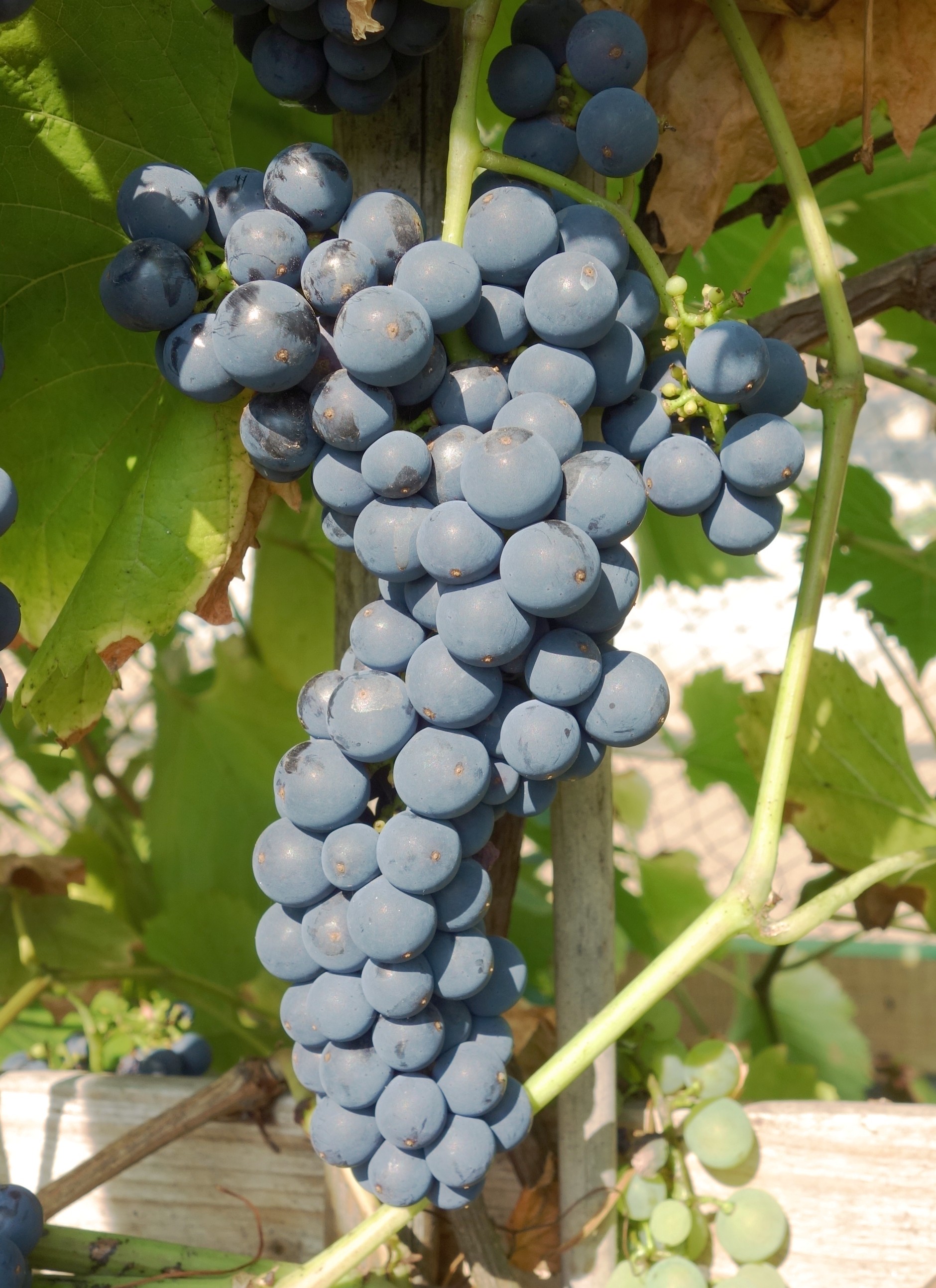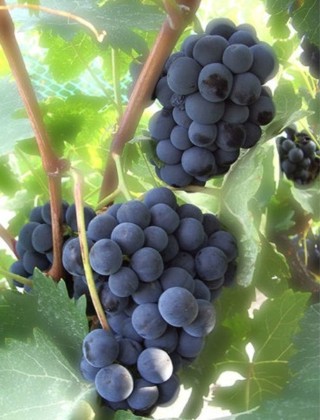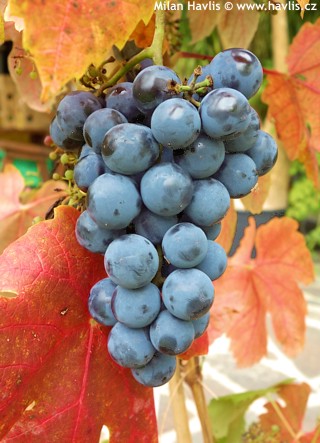Vitis 'MIKA' grape wine
Mika is a blue grape wine from labrusca group i.e. crossed with fox wine for better hardiness. It is renowned for extreme winter hardiness as it withstands temperatures bellow -30°C and early harvest. Mika grape wine produces small to medium large clusters of mid sized grapes very early in the season - from mid August. They are very dark blue, almost black with hints of burgundy red, with typical silver frosting. The taste is sweet and partly acidulated, and many say it recalls the taste of forest blueberries. It is used as a table wine as well as for wine making. Strong grower. Leaves turn shades of red, carmine and burgundy red in autumn.
Grape vine has to be pruned every year in warmer days of January or at the end of winter after the danger of the worst frosts. Cut back side branches to 2-3 buds, 2-years-old wood bears fruit. Treat it against mite before buds open. When it sets fruit cut off the new shoots a few centimeters above the grape and do not let it grow again. From midsummer you can start removing leaves from above the grapes to allow direct sunlight. Get some wasp-trap as they could ruin your fruit and may get dangerous.
Grow grape vine in sunny and airy (not windy) locations. It is not suitable for damp sites and shady pergolas where it can easily be affected by diseases. Provide a good support. The best results are on slopes – because of the angle of sun rays. The soil has to be permeable, humus-rich and deep. Labrusca grape wine prefers acidic soil like e.g. blueberries so it is best to mix your soil with peat. Extra watering is desired by end spring and later only if the summer is dry, and always directly in the soil, never water the whole plant. In autumn remove fallen leaves from under the plants as they might contain diseases and mites. Fertilizing is good if adequate and selective, otherwise the plant will grow wild and set too much fruit of inferior quality. Sukribe grapewine is very hardy and withstands winter temperature of -30°C (USDA zone 5), some growers from North Europe even claim their plants survived -40°C.
Last update 11-01-2016

































